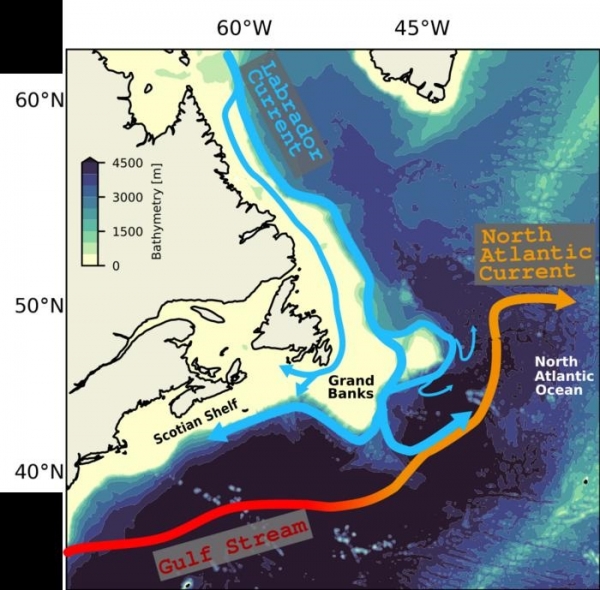Changes to the flow of the Labrador Current along the coast of Newfoundland and Labrador to Nova Scotia are leading to sudden warmings or drops in the oxygen levels of the waters in several regions including the St. Lawrence Gulf and Estuary. This change has dire consequences for marine ecosystems and fisheries. To better predict what could happen in the future, researchers from McGill University set out to answer the question: what controls the pathway of the Labrador Current?
The Labrador Current supplies cold, oxygen rich waters
The Labrador Current is a cold water current in the North Atlantic Ocean that flows south along the coast of Newfoundland and Labrador, continuing partially along the east coast of Nova Scotia and partially turning eastward towards Europe. This cold water current then meets the warm waters of the Gulf Stream, which flows from the Gulf of Mexico into the Atlantic Ocean. The Labrador Current, which flows from the Arctic Ocean, transports cold waters southwards, producing a cooling effect on the Atlantic provinces in Canada and on the United States' northeast coast from Maine to Massachusetts.
Read more at: McGill University
Map of the circulation in the west of the North Atlantic. (Photo Credit: Mathilde Jutras)


